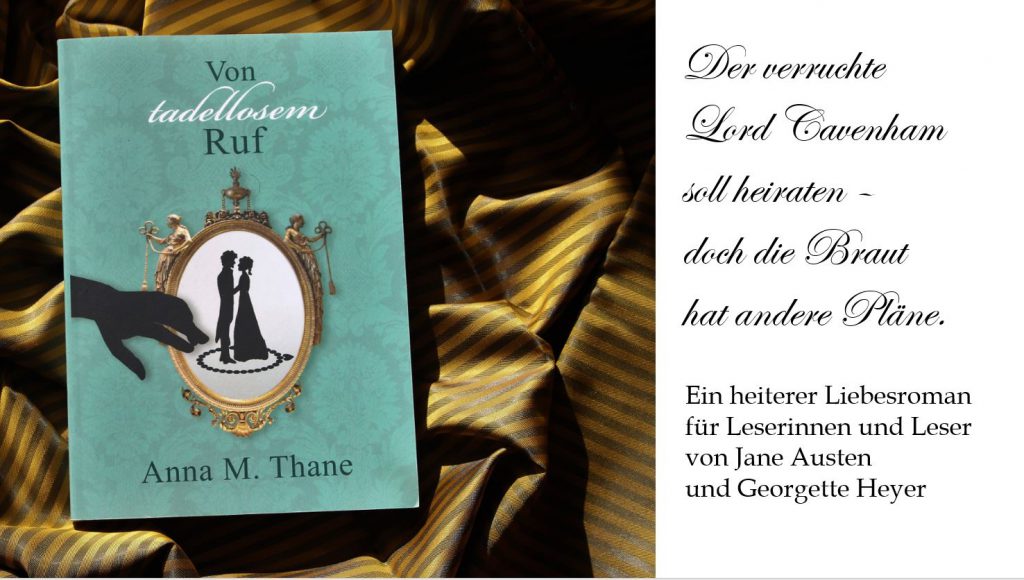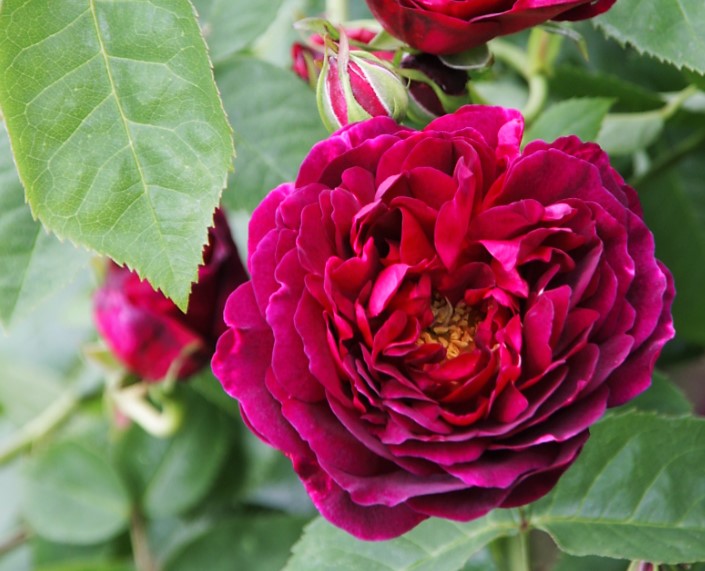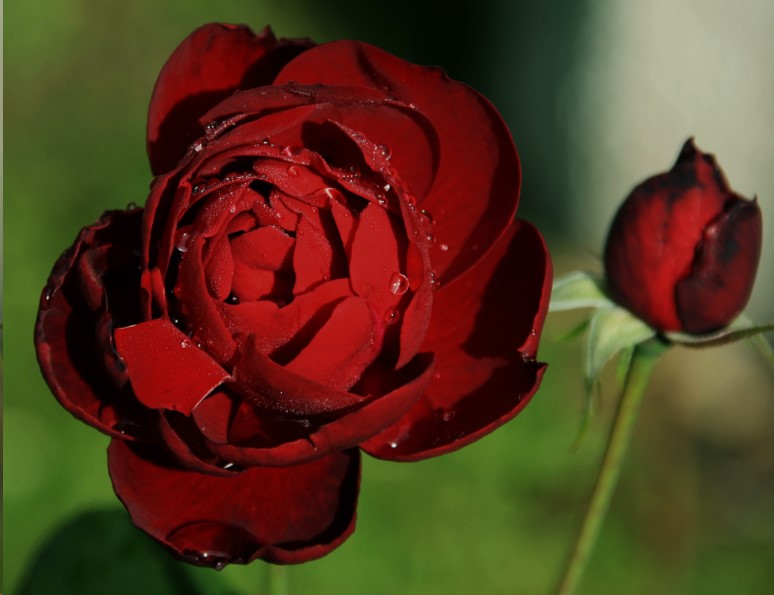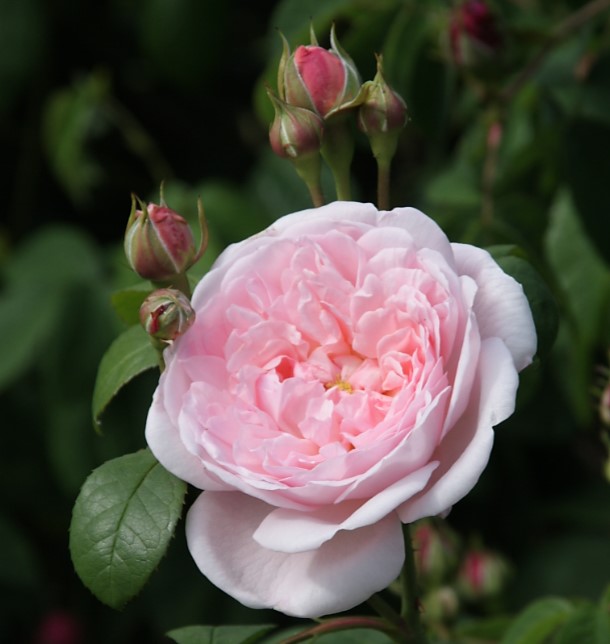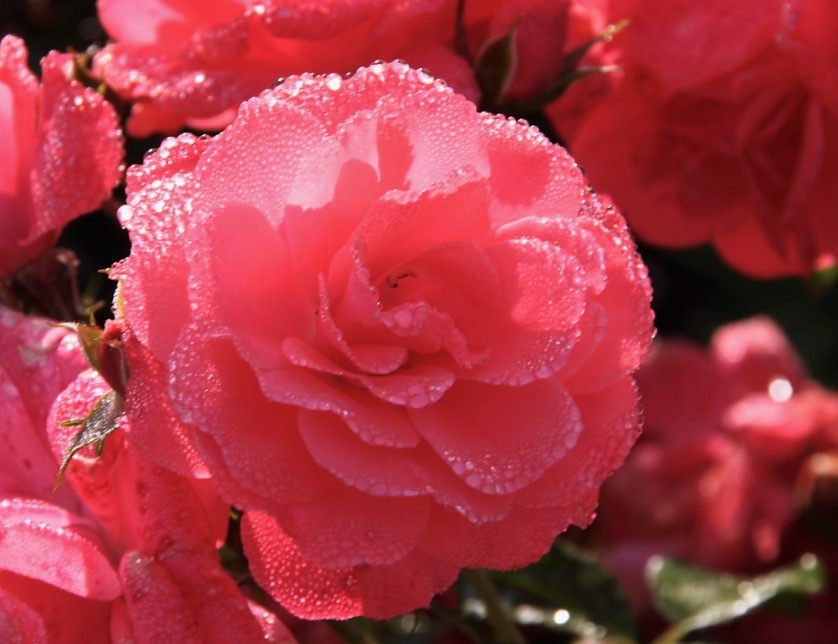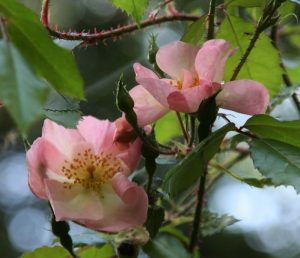 Brief histories of the rose often state that Empress Josephine, wife of Napoleon, kicked-off the craze for the cultivated rose (or: garden rose) in Europe. She certainly had a large collection of roses at her estate in Malmaison / France. Without doubt, she influenced many cultivators and botanists. Her patronage made great botanical works about roses possible, such as Pierre-Joseph Redouté’s famous book „Les Roses“.
Brief histories of the rose often state that Empress Josephine, wife of Napoleon, kicked-off the craze for the cultivated rose (or: garden rose) in Europe. She certainly had a large collection of roses at her estate in Malmaison / France. Without doubt, she influenced many cultivators and botanists. Her patronage made great botanical works about roses possible, such as Pierre-Joseph Redouté’s famous book „Les Roses“.
However, she entered the stage of rose collecting in 1804, when she created her famous garden. By then, many amateur gardeners and botanists had already yielded to a new ‘fever’: the craze for the garden rose. Let’s have a look at some of the British plant enthusiasts that collected and developed cultivated roses into new varieties.
What’s so new about these cultivated roses?
Of course, people knew and loved roses before the 18th century. The rose even is the national flower of England. It was adopted as England’s motif by Henry VII as a symbol of peace after the ‘War of the Roses’ in the 15th century. The English rose – rosa gallica officinalis –is, roughly said, a wild rose. It was very popular in British gardens of the 18th century, as its fruits could be used as tea, marmalade, or as medicine.
It was only from the mid-18th century that natural philosophers and gardeners began to experiment with new varieties of roses that had been introduced from other countries. When we say ‘experiment’, we have to keep in mind that genes and chromosomes were not yet known. Even the concept of pollination by insects or human hand was only vaguely understood. To create new varieties, the common practice was to plant roses closely together and to hope for the best. Yet, by the end of the 18th century, cultivated roses had spread throughout Europe, and with it a new enthusiasm for this beautiful flower.
These men and women were among the first to cultivate new varieties of the roses:
- Margaret Cavendish Bentinck, Duchess of Portland (1715 –1785) is credited with introducing the Portland rose to England from her Grand Tour on the continent around 1775. The Portland rose actually was a rose from Paestum / Italy, a cross between the rosa gallica and the rosa damascena, growing between the ruins of Paestum. It became known as ‘Scarlet Four Seasons’ Rose‘, and was the parent of the whole class of about 84 Portland roses (of which only about 12 still exist today) that were developed from it.
The Duchess of Portland was a keen botanist, a very intelligent woman and an avid collector. She also botanised in the Peak District in 1766.
- Scotsman William Roxburgh (1751 – 1815) was a surgeon’s mate on an East India Company ship in 1772 and thus came to India. As he also was a botanist, he worked extensively in India, described species, conducted botany experiments and published numerous works on Indian botany. He took charge of the Calcutta Botanical Gardens from 1793. Roxburgh sent many Indian seeds and plants home. He also introduced seeds of the rosa indica odorissima to leading British amateur botanists such as the Humes in Herefordshire (more about them in a minute).
- Gilbert Slater, director of the East India Company, gave his name to a recurrent red rose he received from China in 1791. He quickly introduced the new variety to the British market. With its striking crimson colour it became an immediate success. “Slater’s Crimson”, as it was called, soon was shipped to gardens in e.g. France and Italy.
- Sir Abraham Hume, 2nd Baronet (1749 –1838), his wife Amelia (née Egerton) (1751 – 1809) and their head gardener James Mean cultivated many exotic plants from India and the East Indies in their garden at Wormleybury / Hertfordshire between 1785 and 1825. Though being amateurs, they were very skilled. James Mean even edited guidebooks for gardeners and addressed the Horticultural Society of London. Many exotic plant where first cultivated by the Humes, even if it sometimes took several years to succeed: when they received seeds from the rosa indica odorissima in 1796, it bloomed for the first time in 1799. The rose became known under the names ‘Hume’s Blush Tea-scented China‘, ‘Sweet-scented China-Rose‘, and ‘Odeur de Thé Rose’.
The Humes were well connected in Europe: They contributed to Empress Josephine’s large collection of roses at Malmaison despite the war between Britain and France.
- George Macartney, 1. Earl Macartney (1737 – 1806) returned from the unsuccessful mission to open China for the British market in 1794. He brought with him a rose that became known as the Macartney-Rose, or rosa bracteate. It is rather unruly, and has extremely sharp and strong thorns. This might explain why it became the parent for only one rose we know today, the yellow ‘Mermaid’.
- James Lee and Lewis Kennedy from the famous vineyard nursery in Hammersmith (nr London) imported the rosa rugosa from China in 1796. They catered, among others, for the Humes.
Where did many of the new roses come from?
Most roses came from China. Finding roses there actually didn’t take much exploring (which wasn’t allowed for foreigners anyway). Roses were immensely popular in China. The famous Fa Tee gardens were a nursery that grew them in large amounts and varieties. These roses weren’t wild roses but cultivated roses. They became known as tea roses, as their leaves are supposed to smell of black tea. Most travellers simply went to Fa Tee gardens and bought a few species. It was also possible to order roses and have them shipped to you. The journey home was the dangerous parts with salty air, heat, and storms threatening the safe arrival of the plants.
Here are some roses that came to Britain from China:
- Gardener and explorer William Kerr added the white-flowered rosa banksiae in 1807, which he named after the wife of his patron, Joseph Banks.
- Mr. Thomas Evans brought the cruenta rose with him from China in 1810.
- Charles Francis Greville, Esq., had his ‘Seven Sisters’ rose sent to him from China between 1815 and 1817.
As we see, the love for the garden rose started decades before Joséphine’s garden in Malmaison became a center for roses. In fact, many roses that garden-enthusiasts had developed were eagerly collected by the French Empress.
Extended Reading
- Read a guidebook edited by head gardener James Mean: Abercrombie’s Practical Gardener by John Abercrombie and James Mean
- Enjoy P. J. Redouté’s illustrated book “Les Roses”, based on Empress Josephine’s garden.
Note: The roses on the photos are not relating to the roses mentioned in the texts. I have no idea what varieties they are. If you do know it, please feel free to contact me and let me know.
Sources
• Brent C. Dickerson: The Old Rose Advisor, volume 1
• Brent Dickerson: The Old Rose Informant
• Lynne Chapman, Noelene Drage, Di Durston: Tea Roses: Old Roses for Warm Gardens
• Anne Rowe: Hertfordshire Garden History: A Miscellany
• Ernest Wilson: Aristocrats of the Garden
Article by Anna M. Thane, author of the novel
“Von tadellosem Ruf” (http://amzn.to/2TXvrez)
